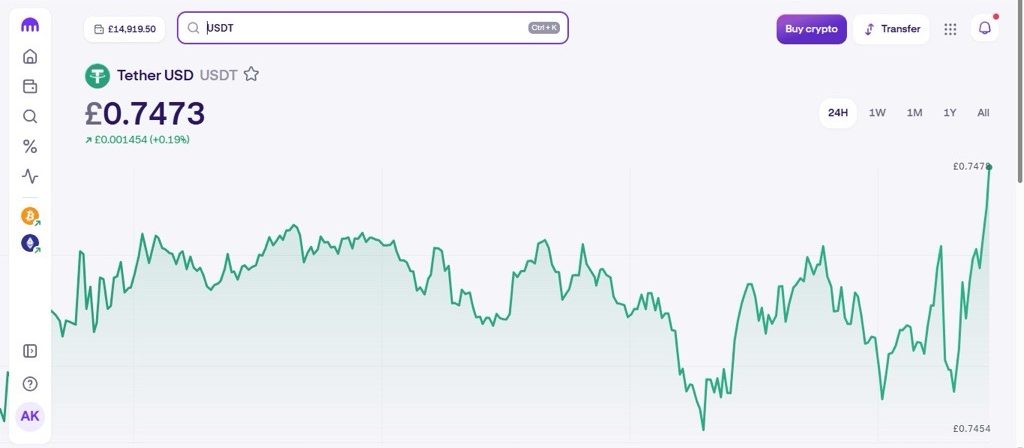How To Use Stablecoins In Day Trading



In the fast-moving world of day trading, stablecoins have emerged as a practical and reliable tool for managing risk, optimizing trades, and staying agile.
This beginner’s guide will help you understand how to use stablecoins in your short-term trading activities.
Key Takeaways
- Active traders typically focus on leading fiat-backed stablecoins like USDT (Tether) and USDC (USD Coin).
- Stablecoins like USDT, USDC, and DAI can be used as a buffer against crypto volatility and to park capital between trades.
- Stablecoins and crypto pairs (e.g., BTC/USDT) can be traded for clearer profit tracking and faster execution without needing to convert to fiat.
- Stablecoins enable quick movement between exchanges, making arbitrage strategies more practical for short-term traders.
- Stablecoins can be used in yield farming, liquidity pools, and flash loan setups for alternative day trading opportunities.
- Depeg events, regulatory crackdowns, and lack of transparency in some stablecoins mean they aren’t as “stable” as many assume. They remain risky – you could lose any capital you invest.
- Based on our investigations, USDT, USDC, BUSD, UST, DAI, and PAXG are the most common stablecoins listed on the platforms at the top crypto exchanges.
Top 4 Stablecoin Brokers & Exchanges In 2025
After testing, we’ve determined these are the best providers for secure stablecoin trading . We logged into each trading platform to check that popular stablecoins, including Tether (USDT), are available.
What Are Stablecoins?
Stablecoins are cryptocurrencies designed to maintain a steady value by being pegged to reserve assets such as fiat currencies (e.g., USD), commodities like gold, or even a diversified basket of assets.
Their main appeal lies in their ability to offer the transactional benefits of crypto – speed, decentralization, and global reach, without the extreme volatility often associated with traditional cryptocurrencies like Bitcoin or Ethereum.
Stablecoins are increasingly being used in foreign exchange (FX) trading, particularly in the crypto-FX and cross-border settlement spaces.
While they are not yet part of the traditional institutional FX markets, they are gaining traction in more innovative and digitally focused FX environments.
Key characteristics of stablecoins:
- Stability: To remain as close as possible to a fixed value, typically $1 USD.
- Asset-Backed: Most stablecoins are backed by real-world assets or mechanisms designed to maintain their peg.

Types Of Stablecoins
Fiat-Backed Stablecoins
Fiat-pegged stablecoins are a type of cryptocurrency whose value is directly tied (or “pegged”) to a specific fiat currency, typically the US dollar (USD), euro (EUR), or Japanese yen (JPY).
Their main goal is to maintain a stable value, typically a 1:1 ratio with the underlying fiat currency.
Key points:
- Pegged to traditional currencies such as the US dollar.
- Backed by reserves held in regulated financial institutions.
- Examples: USDT (Tether), USDC (USD Coin), BUSD (Binance USD)
I’ve invested in new crypto projects, often during pre-sales, ICOs, or IDOs, particularly in the RWA (Real-World Asset) and AI sectors. I typically used stablecoins like USDT or USDC for these purchases.The process was quite smooth: I simply connected my wallet (such as MetaMask or Trust Wallet) to the project’s website or a participating exchange, transferred USDT, and then moved the newly acquired tokens back to my wallet for safekeeping.
Crypto-Backed Stablecoins
Crypto-backed stablecoins are stablecoins that are collateralized with other cryptocurrencies rather than fiat currencies or commodities.
They aim to maintain a stable value (often pegged to a fiat currency, such as the USD) by holding excess reserves of volatile crypto assets as collateral.
Key points:
- Backed by cryptocurrency collateral (often overcollateralized).
- Example: DAI (via MakerDAO, backed by Ethereum and other assets)
Algorithmic Stablecoins
Algorithmic stablecoins are a type of cryptocurrency not backed by traditional collateral (like fiat or crypto). Instead, they utilize algorithms and smart contracts to regulate supply and demand, thereby stabilizing the price.
Key points:
- Maintain price stability through smart contracts and supply-demand mechanics.
- Example: UST (TerraUSD) — notable for its collapse in 2022, highlighting the risks of non-collateralized models.
Commodity-Backed Stablecoins
The value of commodity-backed stablecoins is pegged to the price of a physical commodity, such as gold, silver, oil, or other real-world assets.
A fixed amount of the commodity typically backs each stablecoin, and its price is designed to closely follow the value of that underlying asset.
Key points:
- Pegged to real-world commodities like gold.
- Example: PAXG (Paxos Gold)
Why Stablecoins Matter For Day Traders
At first glance, stablecoins don’t offer the price action many day traders rely on to move quickly in and out of trades.However, I’m a long-time crypto trader and enthusiast who has seen firsthand how stablecoins can offer a seamless way to navigate between volatile assets and provide a reliable base for many trading strategies.
Here’s how they can be used in practical day-to-day trading scenarios:
As A Medium of Exchange
Using stablecoins such as USDT, USDC, or DAI allows traders to park funds in a stable asset during market downtime.
This helps preserve capital without the need to convert back to fiat and avoids exposure to high volatility.
Base Pair In Trading
Many crypto exchanges we’ve evaluated offer stablecoin trading pairs (e.g., BTC/USDT, ETH/USDC).
This simplifies profit tracking, allowing traders to quickly switch between assets while maintaining a clear view of their USD-equivalent gains or losses.
Arbitrage Trading
Stablecoins enable rapid transfers between exchanges, making it easier to execute arbitrage trading opportunities.
When a price difference arises between platforms, traders can buy low on one and sell high on another, converting profits back into stablecoins to mitigate post-trade volatility.
As A Risk Management Tool
Anticipating market turbulence? Traders often convert their crypto holdings into stablecoins to hedge against potential losses.
This is especially common during periods of macroeconomic uncertainty or just after significant rallies.
DeFi Day Trading
Some decentralized finance (DeFi) protocols allow short-term trading strategies using stablecoins, such as:
- Yield farming
- Liquidity pool hopping
- Flash loans
- Lending and borrowing loops
These tools give traders additional options for generating returns beyond traditional spot trading.
No Need To Convert To Fiat
Staying within the crypto ecosystem using stablecoins reduces friction.
Traders avoid conversion fees, banking delays, and some tax complexities by transacting entirely in crypto-backed instruments.
Risks Of Stablecoins
- Depeg Risk: Some stablecoins can lose their peg, especially algorithmic ones.
- Regulatory Uncertainty: Compliance and legal recognition of stablecoins vary by jurisdiction.
- Liquidity: Ensure your chosen stablecoin is widely supported on the platforms you use.
My Tips For Day Traders Working With Stablecoins
- Use Trusted Stablecoins: Stick with well-audited, fully backed coins like USDC or USDT.
- Diversify Exposure: Avoid concentrating all funds in a single stablecoin.
- Choose the Right Platforms: Trade on exchanges with high liquidity and competitive fees for stablecoin pairs.
Bottom Line
Stablecoins may not generate profits on their own, but they can be essential for preserving capital, executing fast trades, and maintaining strategic flexibility.
For day traders operating in dynamic markets, integrating stablecoins into a broader trading approach can enhance both efficiency and resilience.
While stablecoins aim to maintain a consistent value, they are not risk-free, especially for active day traders. Issues such as lack of regulatory oversight, questionable reserve backing, and potential depegging events can expose traders to unexpected losses. Always research the specific stablecoin’s structure and transparency before using it for short-term trading or capital storage.



